A. Gallo handmade watercolours from Assisi: First Impressions

While I try to get myself back into the comic, I’ve been warming up the artsy side of my brain by trying out pencils, pens, inks, papers, digital-art software, and… paints.
Warning: I’m about to get very deeply into paintgeekery for the rest of this post. Not much Rome stuff, I’m afraid.
I’ve tried three handmade watercolours (other than my own attempts), and I’ve been very happy with the paints from those artist artisans. Eve Bolt’s paints got me to try Ultramarine Violet, which I admit I hadn’t previously seen a need for on my palette. Dr. Oto Kano’s paints form lovely smooth gradients, and her strong Hansa Yellow pops right off the page and should be great for mixing.
I recently ordered two dot cards and two half pans from A. Gallo, a paintmaker in Assisi. A. Gallo offers, among other sets, a 12-half-pan “Classic” set and a 12-half-pan “Naturale” set, and those were the selection provided in generous samples on the cards. Alina Gallo makes lightfast, nontoxic, environmentally friendly paints using gum arabic, rosemary oil, and honey. In this humid weather, the dot cards have stayed sticky for 48 hours after swatching. They don’t quite have the “I will get everywhere” problem of M. Graham’s Quinacridone Rust, but I haven’t been able to put them back in their little plastic envelopes. (Update: 72 hours seems to be enough drying time for the dots.)
Classic 12 dot card
Split Primaries:
I started swatching with Lemon Yellow and, since I’m not much for Lemon Yellow, I thought it was fine, very bright. A good substitute for cadmium yellow. I always like a cheery Indian Yellow, which this set’s very orangey one is. (It’s hard for me to resist buying ALL the Indian Yellows from every brand.)
The Vermilion Red is strongly pigmented, a shade somewhere between Sennelier’s French Vermilion and Bright Red, with the deep colour the Senneliers get with a second layer. The Permanent Carmine is also highly pigmented. It makes nice gradients and mixes well.
I’m indifferent to the cool-blue Translucent Cerulean; it’s phthalo-ish and granulating, also strongly pigmented, and I’m sure it would be nice to use. The warm-blue Ultramarine Blue, although it ultimately was fine, was difficult to rewet and get started, which is too much work just for an ordinary ultramarine.
Greens:
But the Chromium Oxide—well, something this opaque isn’t going to be for everyone, but it is rich and intense and, yes, super-opaque in mass tone, and I love it and I want to use it on all the things. I haven’t tried mixing it yet, but I imagine it will overpower almost anything that comes its way if not used sparingly. Viridian (hue) is a green I’d challenged myself just last week to use, since I don’t like the colour itself but apparently it’s great for mixing. I’ll let you know.
Earths:
The Italian Gold Ochre is perfectly nice, smooth, and rich, but I have so many variants of yellow ochre around here, that I’ve made myself, it’s hard to get excited. Sorry, Gold Ochre. The Burnt Sienna is a little toward the orangey-red side and is low key in a useful way—it doesn’t overpower with I-am-the-essence-of-Mother-Earth-herself heaviness. The Burnt Umber is likewise low key, a perfect… well… dirt brown; and it’s easy to get the effect of a textured surface with it.
Neutral:
The Payne’s Gray is an intense mix only ever so slightly toward the blue side, to my eye. I prefer a grey Payne’s Gray, over a bluer one like some brands have (no specific brands come to mind, since I don’t have any of those). I like this one just fine, and it’s so strong that it provides a lot of flexibility for using it at different concentrations for different tinting strengths.
Naturale 12 dot card
Then I started swatching the Naturale dot card, and: Wow. This is when I fell in love with this line of watercolours. The Naturale 12 set also includes Italian Yellow Ochre.
I’ve tried only Buff Titanium twice before—a dark, stony, greyish one from Oto Kano, and a Daniel Smith that didn’t click with me. The creamy colour of the A. Gallo seems to me like it’ll be very useful. It layers beautifully. After trying it in a sketch, I want to use it for more sketches/studies with the Raw Green Umber in this set.
The Moroccan Yellow Ochre is a bit stiff and standoffish, a little browner and more granulating than the Italian Gold Ochre. It’s okay. I could use just this colour alone for, say, painting the upper walls in a Herculaneum street scene, and get all the variations of shading and texture I would need. But I did find myself fighting with it a bit.
The Ercolano Red is granulating and fussy and I had trouble getting a gradient with it. My own version, and my similar Pozzuoli Red, are smoother, and I prefer that. This might be the only colour in the two sets that I’d say I just don’t like, mostly because I couldn’t get it to behave. I haven’t tried it on different papers yet.
The Morellone (Caput Mortuum) will drag all the other colours out into a back alley, steal their pigment, and take over the whole joint. It’s fantastic. It’s opaque. And although it does great things in mixes, it needs to be added sparingly so as not to overwhelm. It made a lovely maroon with Permanent Carmine and a lovely Tyrian purple with Carmine and Ultramarine. I found it too strong when I tried to incorporate it into the shadows in the first sketch I tried.
The yellow-ish Green Earth seemed iffy at first—hard to rewet, reluctant and gooey on the page—but it dries with a beautiful fresco-y texture and shading and I love it so much. The Zecchi-blend Green Earth (Zecchi is another Italian paint brand) is a bluer, less grainy but still sort of fresco-y paint. I like it more and more the more I look at it. It needs layering like the other green earth to look its best.
The Slate Grey is subtle but pretty in the swatch and looks nice once I get enough of it on the page in a painting, but it’s not a simple one to work with. It might be the paper I’m using or the softness of the (excellent) Tintoretto brush, but I had to make an extra effort to get enough pigment onto the brush. It literally wasn’t even visible on the mixing palette. This is one I would want to try in a tube, but it is currently offered only in the half-pan set.
Sartorio Red is a pretty red-ochre brown. Even though it’s highly granulating, I tried it for skin tones and like the colour even if I’m iffy about the gritty effect in skin.
Raw Green Umber doesn’t quite replace my love of Schmincke’s Perylene Green for shading an outline, but it does a fair job at it and layers into nice shadows.
Zirconium Blue went from hard to get any pigment down, to suddenly stunning with more layers. It took a little time but was worth it; it’s somehow capable of being either soft and powdery or translucent with a suggestion of sparkle. I need to cultivate more patience, to get the best from this interesting paint. I don’t have another blue quite like this one—and I have a lot of blues from a lot of brands. This colour isn’t available in a tube. I’m sure some paints aren’t suited to tubes, but: Boo.
The closest blue I have to this in colour is Sennelier’s Cinereous Blue or a very light application of Schmincke Horadam’s powerhouse Helio Cerulean; the closest in behavior is Old Holland’s Manganese Blue Deep. Oto Kano’s Zirconium Cerulean is a little different—more granulating and I think more turquoise/greenish.
Indigo Genuine is a dark, flowing, grey blue that I’ll hesitate to use because genuine indigo isn’t lightfast. I have a pan of Kremer’s Indigo that I use for comparison with lightfast versions and used for a project about fugitive colours. The Kremer indigo always looks washed out, in contrast to this one. A. Gallo also makes a lightfast synthetic indigo paint which I’m sure is made to be a good match for genuine.
Verdaccio half pan
Verdaccio is a mix traditionally made of black and yellow ochre or raw green umber, plus perhaps red and white in some formulations, that I’ve been wanting to try for underpaintings and monotone studies (and also try in encaustic and tempera). I wanted to try it first in a quality handmade paint in which the artisan had given careful thought to the mix as used historically, rather than me mixing it up myself based on descriptions and conflicting recipes. A. Gallo’s Verdaccio is “earth and black iron oxide.” I’ve been using my handmade Antica Green Earth for the same purpose, but it’s nice to have this alternative that has much better flow.
The other half pan I got is Morellone.
Overall
I wasn’t able to lift most of the colours from the paper, but I’ve only used these paints on one paper so far. When I had the patience to wait for a layer to dry, the paints glazed well over it (but I am not good with the whole patience thing). Where I repaired a mistake with white M. Graham gouache, these paints played well with the gouache.
Even though I’m not in love with all the colours, I am in love with this line of paints. They are a joy to use. They make me want to hurry up and get back to drawing SPQR Blues but on watercolour paper so I can add in colour highlights, and also do the full-colour Sunday comics again. I think the Naturale set would add just the right mood and tone to the comic, with some Sennelier paints along to get smooth skin tones and yellows.
Bottom line:
I’m saving up to buy the A. Gallo half-pan Naturale set plus a pan of Chromium Oxide. The 12-pan sets are €85, plus shipping depending on your location; individual half pans and some tubes are available as well. Because they’re handmade, quantities are always limited, and when palette sets come in stock they sell out quickly. It’s not a bad price for gorgeous handmade paints, but, especially considering how much paint I already have, I’ll need to save up for a special treat.
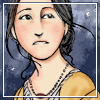


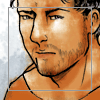
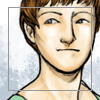
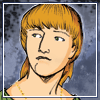
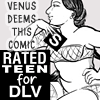



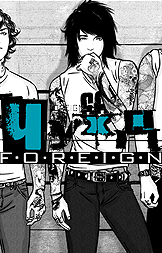

WONDERFUL TO SEE YOU BACK!
(And may you never lose this joy in your materials.)
When I’m feeling down or overwhelmed, looking through some pretty paint samples and doing a tiny little painting always helps 🙂